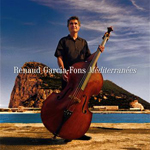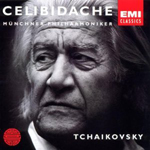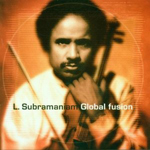This review page is supported in part by the sponsors whose ad banners are displayed below |
 |
 |
|
 |
Against itself: I didn't expect any differences between the Libretto's digital input and drive. Whilst asynchronous USB master mode is technically superior to S/PDIF slave mode, as spinner the Hungarian doesn't separate out into an external converter. The laser read goes I²S directly to the AKM chip. Playing discs the old way thus clearly makes for the shorter simpler signal path. For source material I used a few compilation CDs which I'd put together for the HighEnd 2011 Munich show. On the iMac I ran the very same playlist I'd burnt the blanks from. Switching conveniently from the seat I was rattled, subsequently suspicious and finally nearly decided that there was a difference. If so—and this was a very tough call—I thought the USB feed marginally superior. It seemed to sound stronger, more vigorous, the laser playback softer. When not writing this off as imaginary, I had trouble wrapping my head around possible cause of course. Where were the usual suspects? |
|
For itself: In my book the relevant upshot very simply but also categorically was that async USB to S/PDIF via the battery-powered Tabla did not sound inferior. Perhaps it was ever so slightly better but it most assuredly was none the worse for the involved double trouble. PC haters might as well change religion*. Of course cheapskates will now loudly interject that this invalidates the need for a pricey legacy spinner—which this one is—and wonder just how much or little money one might back out of the Libretto's sticker if it arrived without the Philips drive as just a DC-powered DAC. That's a fair question without a present answer. As a PCfi proponent, I'd simply pass the Libretto with flying colors on performance and for vital bridge building. I do however consider future inclusion of a remote wand with all the usual creature features mandatory for a full 100% endorsement.
________________
* That's all the more relevant when expert room/speaker correction à la Spatial—to talk of real differences rather than various shades of gray—can only be run on digital files, i.e. not via a closed-box conventional disc spinner.
|
|
|
|
| USB to S/PDIF conversion: Comparing the Zodiac Gold as D/D converter to the Hungarian battery-powered and modified hiFace—John Kenny's Mk3 hiFace modification also goes off the grid—was fascinating. With the Antelope in the chain the sound got crisper, with the Tabla it mellowed to something more languid. This was a shift in personality from a focus on transient sharpness to one on gentler flow. I'm not sure what (if anything) battery power per se contributed here just as I was at a loss why this difference existed in the first place. Even so it seemed suggestive. The Tabla's contribution was reminiscent of vintage R/2R 16-bit Philips chips. I most appreciated this distinction with my autoformer passive—John Chapman's Bent Audio Tap-X—likely because its lucidness really is the ultimate I can cull from my options. Before we return to this quality, some boilerplate context. |
|
|
|
 |
Having experimented over the years with various upscale digital solutions including so-called NOS zero-sampling machines, I now believe that above a core level of competence—and disregarding unfamiliar trophy-priced gear which may or may not reset these markers—differences in contemporary CD players or DACs tend to be quite small. Good designers may employ discrete or integrated circuitry, AC or DC power, various fashionable or no-longer-made converter chips, digital or no filters, oversampling or no oversampling, 10 or more clocks (Naim) including one that's capable of 28 million discrete real-time adaptive frequencies (AMR). All of it would seem to span a vast gamut suggesting wildly disparate sonic flavors. Add tech talk, saucy claims, boffo specs and exotic FPGAs with proprietary code. Your head will spin like a propeller on what to believe and how to translate it all into realistic expectations. At the ear this component category has become more interchangeable than not. If it's major differences you're after, there's bigger dividends to be had elsewhere first. |
|
It must be because of the digital nature of this beast. Prior to conversion to analog nobody can't actually listen to a digital signal. Digital design must rely implicitly and exclusively on measurements. Here every designer looks for the same things: low jitter, low noise, low distortion, perfect linearity. Few digital designers would consider voicing legitimate. No matter which approach is chosen—native processing, integer upsampling or ASRC, active or passive I/V conversion, memory buffering, single-ended or dual-differential or transformer-coupled outputs—the perfection of the original recording as the input signal versus what's expected and measurable at the output leaves a lot less margin for deviation than say with preamplifiers. If one wanted a truly purist thru-put preamp, a simple passive would be all that's required. Clearly most consumers and designers expect more or passives would be dominant. You could in fact argue that if a preamp didn't enhance, improve, change or condition the signal, it'd be redundant. That's why from the digital design end we see more direct-drive DACs fitted with analog, digital or hybrid attenuators. They mean to eliminate what in their view is that outdated obsolete preamp. End of detour.
|
| As a CD player or outboard converter, the Human Audio Libretto HD performs on the level of an Antelope Audio Zodiac Gold with Voltikus though it presently remains incapable of processing 176.4kHz. The—wholly arbitrary—Zodiac benchmark places it a minor step above the Weiss DAC2/Minerva and Resonessence Labs Invicta machines. The Gold ultimately had the edge on air but you're likely to find greater differences whilst swapping looms of boutique cables. That said, the little turn of phrase 'edge' becomes decisive in a highly resolved context. The Libretto's calling card is a combination of modern 'ultra' resolution with a subtly languorous undertone that softens transient impact and shifts attention from metronomic precision to musical flow. |
|
|
|
|
 |
At first I was uncertain that battery operation was more than conceptual exotica when Antelope Audio's affordable competitor with its quality but normal linear AC supply suffered no setbacks except for DUI - driving under the influence. Here that's fluctuating power-line pollution and voltage instability. The Hungarian will sound power invariant 24/7. Once I substituted my Esoteric preamp for the wildly more affordable Tap-X to 'widen the gap', I began to suspect that Human Audio's choice of battery supply indeed was directly responsible for that more organic, less mechanical flavor. The price to pay is the wobblies from the crazy but effective roller-ball scheme; the ultra-basic control interface; theoretically limited playtime; and the micro-volume boutique sticker. The outboard Tabla interface post driver installation was instantly recognized as M2Tech hiFace and worked without a hitch. Perhaps a future iteration will install it inside the drive unit to cut down on box count and cabling. |
|
|
|
|
Conclusion:
Off-the-grid power, renewable resources (solid bamboo housing) and output transformers suggest a target audience off the mainstream. Perhaps that's our hobby's equivalent of müsli, homeopathy, Birkenstocks and solar-powered earthships? Make no mistake, conceptual sympathies definitely factor. Here they also walk right past the Esoteric/simaudio archetype of he-man mass, vault construction, full-metal jackets, large legible displays, comprehensive remotes and a plethora of 'hi-tech' options like selectable filters, DSD upsampling and variable dither.
Forgetting about any such allegiances to deal purely with how things perform, these sonics are thoroughly modern on resolution and capture a whiff of the organic NOS school. Despite presumed wood shack origins the Libretto HD really is fully competitive with top measuring custom-programmed studio gear where hearing it all matters most.
Even so there's a fine embedded extra. This morphs from subliminal to more tacit as one's overall system purity increases (in my case that meant using an AVC). That extra element is what I think of as the Chopin effect. In your head juxtapose a J.S. Bach fugue with a nocturne from the Polish prodigy. Mathematical precision meets rubato. Rubato is time-based flexibility. That's suggestive of ebb and flow. Voilà. Without introducing any real timing incertitude, that sense of flow—so different from a sewing machine Bach harpsichord yet absolutely immeasurable with our usual battery of bench tests—sets the Libretto HD apart from machines like my Weiss DAC2. Daniel Weiss is one of those engineers who is candid about not listening to his creations during their R&D at all. I know for a fact that Human Audio laboured hard on the endless audition side of things. I'm of a mind to say it shows...
|
|
Quality of packing: Very good. Custom box with velcro lid contains it all neatly separated, a standard outer cardboard box takes the usual shipper abuse.
Reusability of packing: A few times.
Ease of unpacking/repacking: A cinch.
Condition of component received: Flawless.
Completeness of delivery: Perfect. Includes battery charger with appliance cord to the wall, short umbilical between PSU and head unit, digital interconnect, CD weight, glass roller-ball base and two different kinds of metal balls
Human interactions: Good.
Pricing: Exotic boutique.
Final comments & suggestions: Repackage the hiFace module inside the head unit to eliminate an extra box and S/PDIF cable. Include Daisy remote to expand remote control functions over the Philips drive.
|
 |
 |
|
 |
|